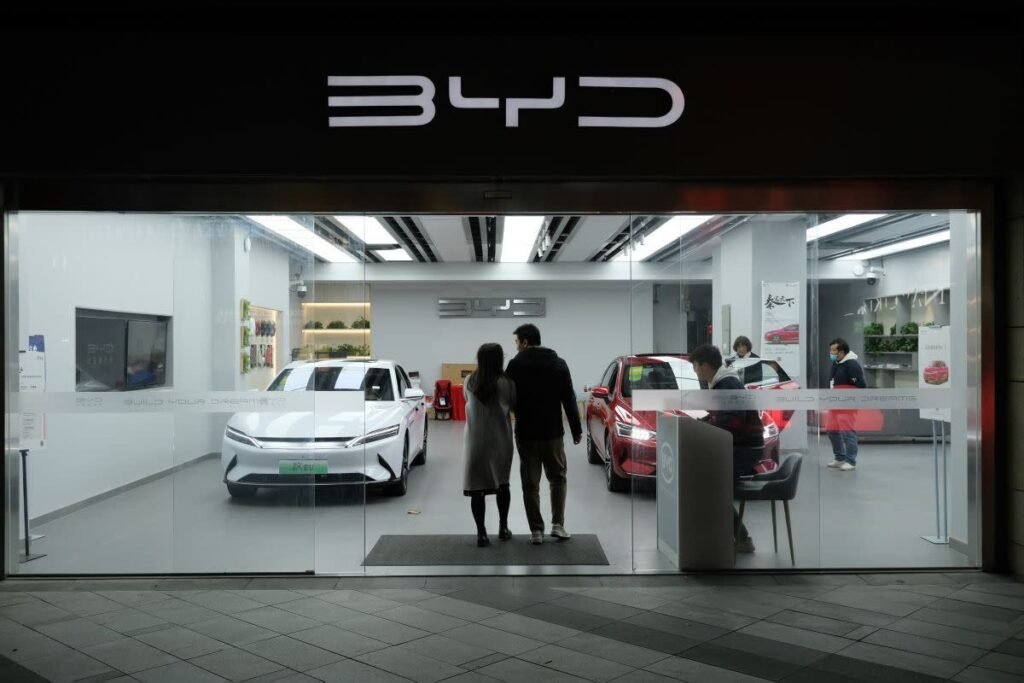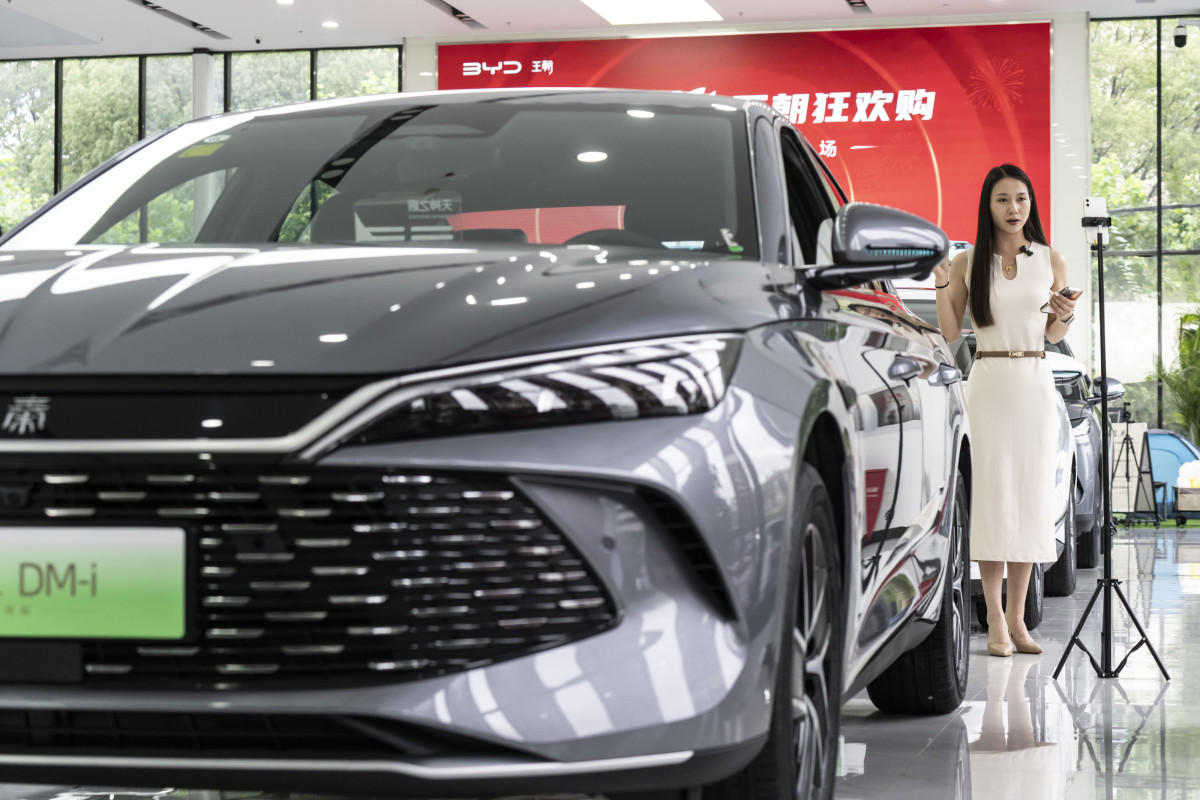
No exceptions for EV makers
After years of explosive growth, the electric vehicle market is hitting the brakes — and fast. In China, Europe, and the United States, once-surging demand for battery-powered cars has begun to sputter, dragging down even dominant players like BYD and Tesla.
BYD, the Shenzhen-based giant often hailed as the Tesla of China, reported a 12% year-over-year drop in October sales, delivering 441,706 vehicles for the month. It was the company’s second consecutive monthly decline — a rare setback for the world’s largest EV producer.
BYD’s surprising stumble
The slowdown was enough to knock BYD off its perch as China’s top-selling automaker, overtaken by state-owned SAIC Motor, which shipped 453,978 vehicles in the same period. BYD’s shares fell nearly 2% on the news, bringing them to a nine-month low and roughly 36% below their May peak.

Qilai Shen/Bloomberg via Getty Images
To meet its full-year target of 4.6 million units, analysts say BYD will need to move at least 450,000 vehicles per month through the end of the year — an ambitious pace amid intensifying competition and weakening demand.
Meanwhile, rivals like Geely, Xpeng, Leapmotor, and smartphone-turned-carmaker Xiaomi all posted record sales in October, underscoring how crowded China’s EV market has become. Li Auto, another high-profile startup, bucked the trend with its fifth straight monthly drop.
A global chill in EV demand
The pain isn’t limited to China. In the U.S., several automakers reported massive declines in electric vehicle sales last month following the expiration of up to $7,500 in federal tax credits.
Ford’s EV sales plunged 25% year-over-year in October, including double-digit drops for the Mustang Mach-E and F-150 Lightning. Hyundai and Kia reported even steeper declines — between 52% and 71% from a year earlier — while Toyota sold just 18 units of its bZ4X electric SUV, down from more than 1,400 the year prior.
Industry analysts say the slump was largely expected. Many consumers rushed to complete purchases before the federal incentives expired at the end of September, temporarily inflating sales numbers in the third quarter. Automakers are now betting that hybrids will carry them through the downturn. Hyundai, for example, reported a 41% surge in hybrid sales last month, even as its pure EV deliveries fell by more than half.
The end of easy growth
The slump in EV sales marks a turning point for an industry that, until recently, seemed unstoppable. Years of government subsidies, cheap financing, and rapid technological improvement helped fuel a global boom that pushed electric cars into the mainstream. But those tailwinds are now fading.

Geely
In China, fierce price wars are squeezing margins. In Europe, high interest rates and economic uncertainty are making buyers think twice about premium models. And in the U.S., the end of federal incentives has stripped away one of the most powerful motivators for first-time EV buyers.
Final thoughts
Analysts say the slowdown doesn’t spell doom for electrification, but it does mark the end of the easy-growth era. For BYD, Tesla, and their global peers, the message is clear: the next phase of the EV revolution won’t be powered by incentives or hype. It’ll depend on whether automakers can make electric cars affordable, reliable, and genuinely desirable — without the government footing part of the bill.



